Interview With Kathryn Silver-Hajo
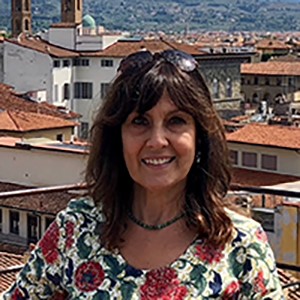
I first met Kathryn Silver-Hajo in a Facebook writing class at the beginning of COVID. It was run by a lovely writer—and person—Meg Pokrass, and I so very much appreciated the chance to connect with other writers during that lockdown time. What a joy it was to read Kathryn’s work in the class! I have been a fan ever since! We finally met this summer at another writing event, this time, an in-person retreat in Santa Fe through the wonderful Bending Genres. I had already interviewed Kathryn about Wolfsong, her gorgeous collection of short stories when she told me she had Roots of the Banyan Tree, a young adult novel, coming out this November!
So here we are again—Kathryn and I, and now you! I am so excited to introduce to a wonderful person, writer, and friend!
Diane: I had the pleasure of interviewing you recently for Fractured Lit about Wolfsong (ELJ Editions), your gorgeous collection of stories. Much of today’s interview is inspired by that previous conversation, but I know you have a new book coming out this month. A novel! Your first! Please tell us a little bit about Roots of the Banyan Tree (FlowerSong Press).
Kathryn: The novel is a portrait of the life of young protagonist, Noor, as she navigates the dangers of civil war in her native Lebanon and the challenges of life in the diaspora in the New York City of the 1970s. It focuses on the tragedy of a country torn apart by sectarian conflict but also the excitement of the teenaged narrator’s coming-of-age adventures. It is the culmination of almost exactly ten years of work!
Diane: What made you decide to write a novel? What made you decide to write YA (young adult)? What were the challenges of writing for and about a young girl? What were the unexpected delights?
 Kathryn: After graduating from college, my husband-to-be and I moved to Lebanon in early 1982. The Israeli invasion of Lebanon began on June 6th, just six months after—on the day we were moving to our own apartment. The terror and stress of living under continual aerial, naval, and ground, bombardment had a profound impact on me in spite of living in one of the safest parts of Beirut, where most journalists, academics, and others, including foreigners, lived. At the same time there was still residue from the Lebanese Civil War which had begun in 1975.
Kathryn: After graduating from college, my husband-to-be and I moved to Lebanon in early 1982. The Israeli invasion of Lebanon began on June 6th, just six months after—on the day we were moving to our own apartment. The terror and stress of living under continual aerial, naval, and ground, bombardment had a profound impact on me in spite of living in one of the safest parts of Beirut, where most journalists, academics, and others, including foreigners, lived. At the same time there was still residue from the Lebanese Civil War which had begun in 1975.
“It Is the Youngest, the Most Vulnerable Among Us, Who Experience the Deepest Scars, But Who Also Have an Intrinsic Resilience, Curiosity, and Passion for Life”
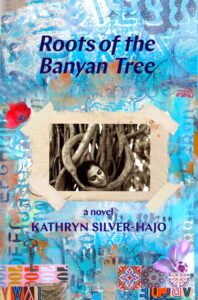 I was in my twenties at the time, full of youthful excitement and optimism, engaged to be married and joining a big, robust, welcoming Lebanese family. Living through the war and seeing its destructive, disruptive impact on people, especially youth and families, had a major impact on me. Trauma, death, grief, continuous anxiety, the fear that you or someone you love could die at any moment had a devastating effect on the fabric of the society—and on me. These impacts and impressions haunted me and, as someone who’s always had the impulse to write, I began journaling, writing poetry and stories, hoping to capture something of these experiences.
I was in my twenties at the time, full of youthful excitement and optimism, engaged to be married and joining a big, robust, welcoming Lebanese family. Living through the war and seeing its destructive, disruptive impact on people, especially youth and families, had a major impact on me. Trauma, death, grief, continuous anxiety, the fear that you or someone you love could die at any moment had a devastating effect on the fabric of the society—and on me. These impacts and impressions haunted me and, as someone who’s always had the impulse to write, I began journaling, writing poetry and stories, hoping to capture something of these experiences.
But nothing seemed to adequately capture the realities until I began writing a novella, titled Four Swirls of Ink, in 2013 (unpubished). The novel is set during the mid-to-late 1970s during the hottest part of the Lebanese Civil War. I decided to write from the perspective of a teenage girl because it is the youngest, the most vulnerable among us, who experience the deepest scars, but who also have an intrinsic resilience, curiosity, and passion for life. The novella evolved into Roots of the Banyan Tree, which is a full-length novel. My hope was—and is—that the book may help people in the West have a deeper understanding and empathy for those living in the Middle East—to see them as the sensitive, complex, creative humans they are. To acknowledge their history, to see that they love, yearn, have needs and rights, as do people everywhere in the world.
“It Was Quite Thrilling But Also Challenging to Dig Deep into My Own Past and Psyche”
 The young protagonist, Noor, is just fourteen when the novel begins, and we follow her as she navigates friendships, new experiences, crushes, creative expression, and deep love for her family in the midst of war. We follow her, too, to New York City, where she faces a new set of challenges—cultural displacement, racism, biases, and ignorance, but also exposure to a whole new constellation of experiences.
The young protagonist, Noor, is just fourteen when the novel begins, and we follow her as she navigates friendships, new experiences, crushes, creative expression, and deep love for her family in the midst of war. We follow her, too, to New York City, where she faces a new set of challenges—cultural displacement, racism, biases, and ignorance, but also exposure to a whole new constellation of experiences.
When I first began writing, I didn’t categorize the novel as YA, but it soon became clear that the story, told in Noor’s voice, represented the youthful perspective of Young Adult fiction.
As for writing for and about a young girl, it was quite thrilling but also challenging to dig deep into my own past and psyche, to remember how it feels to be at that exciting but also fraught juncture, where we strive for a balance between openness and privacy, look to our parents for support and guidance, but also try to figure life out for ourselves. It’s that tricky juggling act in adolescence between the need for safety and security but also a certain appetite for exploring danger and the unknown. It was a particular challenge as a white American woman to try to faithfully represent life in 1970s Lebanon for a young Arab girl/woman, knowing full well that the cultural context was quite different from how I grew up, though also bearing many commonalties.
“I Very Much Hope That Roots of the Banyan Tree Will Reach Adult Audiences As Well As Young People”
 I did multiple interviews, talked with dozens of people who lived through the civil war. I read, read, read, and then read some more, to educate myself on multiple levels. I asked many Arab women and men to read and critique the manuscript. I also have the significant advantage of speaking Arabic fluently and having lived intimately within that society during wartime as a young person—though not as young as Noor. I also studied Middle Eastern history, civilizations, and languages in college. So, all in all, I definitely had a leg up!
I did multiple interviews, talked with dozens of people who lived through the civil war. I read, read, read, and then read some more, to educate myself on multiple levels. I asked many Arab women and men to read and critique the manuscript. I also have the significant advantage of speaking Arabic fluently and having lived intimately within that society during wartime as a young person—though not as young as Noor. I also studied Middle Eastern history, civilizations, and languages in college. So, all in all, I definitely had a leg up!
Diane: I LOVE reading YA literature. One of the industry’s target audiences for YA lit is adult women! Why do you think that is? Are you looking forward to an audience that includes people way past their teens?
Kathryn: I’ll start be saying, emphatically, YES. I very much hope that Roots of the Banyan Tree will reach adult audiences as well as young people. To me it makes a lot of sense that adult women love and read YA. To a great extent, women are the protectors, the preservers, the story-tellers in most societies. The wide-openness of youth—the creativity, curiosity, wonder, and exuberance for life—tends to get tamped down with the realities of adulthood, but I think women in particular want to hold onto—or rediscover—the freedom of youth that we often don’t fully appreciate until we’re older.
Reading YA is one way of reconnecting with that wonderment and creativity. And I’d like to believe that if women were in charge of the world, we’d find better methods of conflict-resolution than throwing bombs at each other. I dearly hope that the novel conveys that life-affirming message. No one wins in war and for the sake of our children and ourselves, we must find a better way.
“I Needed to Find a Way Into the Stories That Longed for Expression”
 Diane: What first brought you to writing?
Diane: What first brought you to writing?
Kathryn: The first time I remember consciously writing creatively was in high school. Brookline High was very much with the times in the 1970s. We had a school-within-a-school where students sat in a circle and were on a first-name basis with their teachers. They had classes in African-American literature and history, feminist ideology, history from an enlightened perspective. I took every creative writing and AP English class I could and found that writing was my passion. The demands of adulthood interrupted the flow of my creative life for many years, but I began again in earnest when I was pregnant with my second child in the early 90s.
Diane: You’ve had most of your work published when you were already over 50. Do you think your voice needed the years and life experience behind it to come into its own?
Kathryn: I think I had so much bottled up inside me, whether in terms of difficult childhood experiences, my parents’ divorce, surviving a war as a young adult, or living between two cultures, I needed to find a way in to the stories that longed for expression. Couple that with working full time, building a business and raising two children—there were always ample excuses and obstacles to putting pen to paper!
“Not Until My Mid-forties Did I Decide to Make Creative Writing a Major Focus”
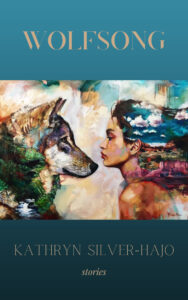 I’ve always written in one form or another—on school newspapers, in a journal, poetry groups, workshops, etc., but not until my mid-forties did I decide to make creative writing a major focus. At that time, I started in the Creative Writing MFA program at Emerson College on a very part-time basis, with the wonderful Pamela Painter being among my most cherished teachers. I didn’t finish for personal reasons, but I was well on my way to making writing a major priority. I started on the novel in my 50’s and once it was on the path to publication, I turned my attention to flash—a welcome change after nearly a decade spent on the novel!
I’ve always written in one form or another—on school newspapers, in a journal, poetry groups, workshops, etc., but not until my mid-forties did I decide to make creative writing a major focus. At that time, I started in the Creative Writing MFA program at Emerson College on a very part-time basis, with the wonderful Pamela Painter being among my most cherished teachers. I didn’t finish for personal reasons, but I was well on my way to making writing a major priority. I started on the novel in my 50’s and once it was on the path to publication, I turned my attention to flash—a welcome change after nearly a decade spent on the novel!
Diane: Let’s talk a bit about Wolfsong, your collection of flash, or short, prose. You place the women in your stories in some very challenging, sometimes desperate situations, but you never paint them as victims. All your characters have agency, and they know it. How important was that to you?
Kathryn: It’s interesting. It certainly wasn’t conscious. I think it’s just intrinsic to my nature. I don’t believe in victimhood. I can remember situations where I was on a dark or isolated street, and I felt threatened. Instead of shying away, I would scream bloody murder or do something otherwise to make myself bigger rather than smaller. That’s who I am, so it comes through my characters as well. I didn’t want them to be victims, I wanted them to have agency. That’s very important to me.
“I Don’t Always Know in the Beginning If It’s Going to Come Out as Nonfiction or Fiction”
Diane: Did you have a lot of strong women in your life?
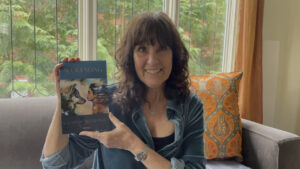 Kathryn: I’ve had a combination. I’ve had some very strong women in my life, and a few whom I would say were less in charge of their own destinies. That really bothered me, motivated me to be different. I do a lot of writing about family, either directly or indirectly, so some of those very strong women and even the more vulnerable ones are in there, usually finding ways to survive and thrive, to grapple with the difficulties they face.
Kathryn: I’ve had a combination. I’ve had some very strong women in my life, and a few whom I would say were less in charge of their own destinies. That really bothered me, motivated me to be different. I do a lot of writing about family, either directly or indirectly, so some of those very strong women and even the more vulnerable ones are in there, usually finding ways to survive and thrive, to grapple with the difficulties they face.
Diane: The collection is a hybrid of fiction and non-fiction stories—and you don’t tell us which is which! Do you sit down and plan to write either fiction or nonfiction? Is that choice in your brain before you put the pen to page?
Kathryn: Not necessarily. I think more frequently what happens is an idea or story comes to my head, something I know I want to write about. I don’t always know in the beginning if it’s going to come out as nonfiction or fiction.
Diane: So, you’re surprised too. I imagine the distinction between fiction and non-fiction is not a critical one for you.
Kathryn: That’s very true. I love it when a journal has a prose category and doesn’t distinguish between the two. There’s more and more bending, or blurring of categories, more hybrid categories, and I love that.
Diane: Your stories deal with some pretty serious subject matter, but I appreciate that there’s also humor in many of them. How important is it for you to put humor in your work, and do you find it hard to pull off?
“It Was a Hard Story for Me to Write, and a Hard One for My Brother to Read”
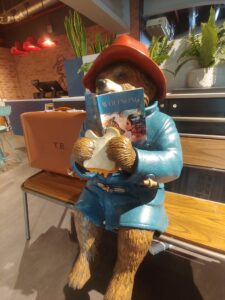
Patricia Bidar-London
Kathryn: It’s very hard, for me. I love when I read humorous work, and my wonderful writing and critiquing buddy Mikki Aronoff is so good with humor. Her funny pieces always make me stop and think, “How did you do that?” So anytime I get a spark of something funny, I go with it.
Diane: Along with the touches of humor there is underlying sadness and longing in most of these pieces. It Might Have Happened Like This, comes to mind, a story where the narrator, a young woman tells of her 10-year-old brother’s horrific accident—and then rewrites history. Can you talk about that one a little bit?
Kathryn: Sure. That’s a creative nonfiction piece. My parents divorced when I was ten. That’s where some of the sadness that you sense probably comes from. My brother was from my mother’s second marriage, and the family never really fell back together as a cohesive unit after the divorce.
After my mother divorced her second husband, I was responsible for my brother when she was working. So there I was, the responsible adult, and then my brother had a serious accident. It was absolutely devastating. It was a hard story for me to write, and a hard one for my brother to read.
Diane: You told your brother about the story before it was published. Is that something that you do with most of the characters you write about?
Kathryn: No. I always try to write mindfully. I don’t want to hurt anyone’s feelings or go behind anybody’s back. On the other hand, I think as writers we have to be honest, have to be true. We have difficult stories to tell. Sometimes, my stories are straight fiction. Other times, I may take a factual element but fictionalize it, so it takes away some of the sting or stigma. And sometimes I just go for it and write straight nonfiction.
“None of the Stories in the Book is Called Wolfsong, But a Number of Them Have a Dog in One Guise or Another”
 Diane: You write a lot about place as well. New Mexico appears in a bunch of these stories. And Lebanon. I especially loved “Snake, Taos, New Mexico,” which was nominated for Best Small Fictions, and “Banging Pots and Pans,” nominated for both a Pushcart and for Best American Food Writing. Neither of these two stories could have taken place anywhere else. And now there’s the novel which the protagonist Noor navigates Lebanon and NYC!
Diane: You write a lot about place as well. New Mexico appears in a bunch of these stories. And Lebanon. I especially loved “Snake, Taos, New Mexico,” which was nominated for Best Small Fictions, and “Banging Pots and Pans,” nominated for both a Pushcart and for Best American Food Writing. Neither of these two stories could have taken place anywhere else. And now there’s the novel which the protagonist Noor navigates Lebanon and NYC!
Kathryn: As I mentioned earlier, I lived in the Middle East and studied Middle Eastern history and languages. My husband is from Lebanon, and we went back and lived there for several years after we both graduated. I have a very deep connection to the area, and my mother-in-law was one of those strong women you asked about, a very powerful woman—she’s in “Banging Pots and Pans.”
When my dad remarried, he and his second wife bought an old camper and drove out to New Mexico. They ended up settling in the mountains north of Taos and lived there until my dad died 15 years ago. So northern New Mexico is another deep influence in my life and is very dear to my heart.
Diane: Kathryn, I love the titles of the collection and the novel. How did you come up with them?
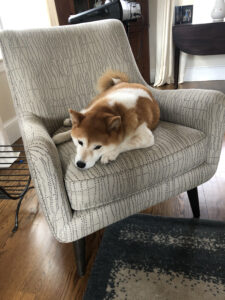 Kathryn: So, none of the stories in the book is called Wolfsong, but you may have noticed that a number of them feature or have a dog in one guise or another. My little dog, Kaya, in spite of being cute and curly-tailed, can be quite fierce. Shiba Inu’s are hunting dogs, so she’s a huntress and can be ferocious and fearless but also extremely protective, loving, and tender, as can wolves. It struck me that this is also true of a lot of the female characters in the stories. They have all these different qualities, wolf-like qualities. Ariana Den Bleyker (the publisher) and I batted this idea around, and eventually, the concept and the name Wolfsong came together.
Kathryn: So, none of the stories in the book is called Wolfsong, but you may have noticed that a number of them feature or have a dog in one guise or another. My little dog, Kaya, in spite of being cute and curly-tailed, can be quite fierce. Shiba Inu’s are hunting dogs, so she’s a huntress and can be ferocious and fearless but also extremely protective, loving, and tender, as can wolves. It struck me that this is also true of a lot of the female characters in the stories. They have all these different qualities, wolf-like qualities. Ariana Den Bleyker (the publisher) and I batted this idea around, and eventually, the concept and the name Wolfsong came together.
“Practice Your Art in Whatever Form and in Whatever Moments You Are Able or Desire To”
Roots of the Banyan Tree takes its name from a mighty, old tree that’s in the middle of the American University of Beirut campus, where Noor experiences her first kiss amidst the sheltering vertical roots. The tree also has significance later in the novel—as curious readers will discover!
Diane: Any last words for women over 50 who want to try something new or further develop their craft?
It took a lot of struggle, time, and life-experience to get to the point where I essentially treat writing as my full-time job. Though it’s the worst-paid job I’ve ever had, it is also by the far the most joyful and fulfilling. It is a profound privilege to be able to spend as much time on my craft as I do, but I’ve definitely paid my dues in order to get to this point! For anyone who is passionate about their art—be it visual or performance art, music, or writing, don’t ever think of it as an unnecessary or disposable part of your life. Forget the nonsense about not being a writer (or sculptor or, or, or) unless you do it every day or so many hours a day. This is very much a male paradigm and comes from its own kind of privilege. Practice your art in whatever form and in whatever moments you are able or desire to. The satisfaction and joy that come from it are yours alone and if you choose to share your bounty, you are offering a great and unique gift to the world.
As always, I’d love to hear from you. Please write a comment or send me an email.
See you soon!
XOXOXO
Diane

For one-on-one support in uncovering your voice on the page, please consider working with me! I’d love to join you on your journey!



kathryn …………… such a great and insightful interview ………. love your writing and am so proud of you. I miss you !
Loved reading more about you, Kathryn, and your new book.
I LOVE this interview! I DEEPLY LOVE these two writers! What a meeting of HEART, BRILLIANCE, EXPERIENCE, AND LIFE! Thank you for this! Fantastic! xoxoxo Meg
Oh, thank you so much, Meg! We love you back!! XOXOXO
Greta! Thank you so much for taking the time to read the interview and thanks to both of you for your lovely comments!
Loved this interview. Kathryn beautifully expresses modern writing: tough background(s), life-changing experiences, multicultural living, youth perspectives, and writing as a real job (although poorly paid.)
I’ll read it again and again.
Thanks, Diane.
greta
Thank you, Greta! And I can’t agree with you more! Kathryn has lived! And lucky for us, she shares her wisdom and experience in her beatuiful work!